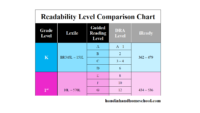“Dyslexia” is an umbrella term used by many people to talk about a variety of reading problems. “Dyslexia”, however, is not an official diagnosis that you will get from testing. Children found to have a reading disability will most likely be identified with a Basic reading skill, Reading fluency skills, or Reading comprehension deficit. Those are the terms used by the Federal IDEA regulations.
Reading disabilities stem from one of three problems
-
Phonological Deficit: Inability to correctly associate sounds with letter combinations
Despite phonics instruction, the child just can’t seem to remember letter-sound pairings and is constantly struggling to read even the simplest of words. -
Rapid Naming Deficit: Inability to quickly and accurately identify sounds and read them as words
The child can read, just very, very slowly. By the time the child has finished reading the last word in a sentence, they don’t usually remember what the earlier words were. -
Double Deficit: Combination of Phonological and Rapid Naming Deficits
Decades of research tell us that reading disabilities are brain-based problems. A dyslexic child is not a lazy learner. They are a student whose brain is not properly wired to take in and store all the information they need to remember so they can be successful readers. Having a reading disability not only effects a child’s ability to comprehend what they read but it may also create problems in vocabulary growth and spelling.
Understanding where the problem lies is critical to determining what type of remedial services can help a student become a more successful reader. Phonological deficits require a certain set of instructional methods to help the student finally learn correct letter-sound pairings. Children with rapid naming deficits, on the other hand, generally have solid phonics skills under their learning belts. Instead, they need extra practice with fluency skills – or the ability to accurately and efficiently recall what they know.
Last modified on April 14, 2020




